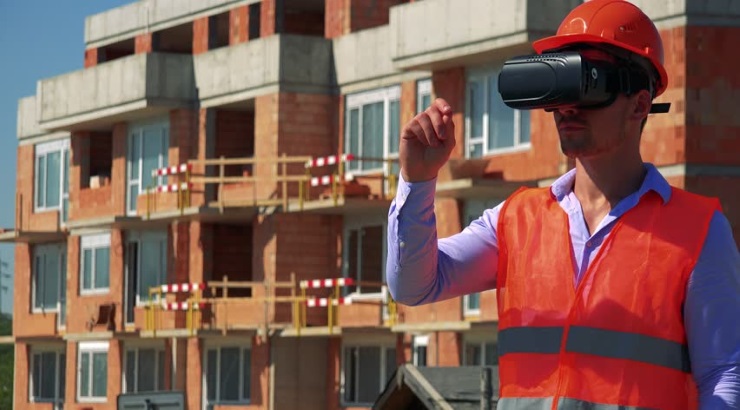Innovation
How Wearable Technology Could Change Construction
Innovations are likely to enhance safety and efficiency for site workers.

The construction industry has long been plagued by high levels of risks that often lead to costly and sometimes fatal accidents and injuries.
From getting crushed to death by heavy machines on site to suffering fatal falls or electrocution, construction workers constantly face the risk of losing their lives.
However, the advent of wearable technology promises to help the industry overcome these problems through innovations that lead to safety and efficiency for site workers.
Defined as any kind of electronic device worn on the user’s body, wearable technology in construction generally includes electronic devices designed to collect and convey data about the worker’s surroundings, actions, and biometric conditions.
These devices can monitor, detect, and caution the employee of the potential injury, or lessen the gravity of the damage when it occurs. This is made possible through innovations such as gyroscopes, emergency alerts, and tracking devices.
Popular types of wearables that are already making waves in the construction industry include virtual wearables, tactile wearables, and sensing wearables.
Virtual wearables
Virtual wearables are devices that use optical aids in or on glasses, visors and hard hats to create images for far-flung viewers. They can connect field workers and supervisors in the office – allowing both parties to view projects simultaneously.
RELATED: Top 10 Real Estate Technology Trends to Watch
These devices allow field operatives to continue working with their hands as they discuss solutions with their office-based supervisors.
Tactile wearables
On their part, tactile wearables work as an exoskeleton to boost a user’s strength or endurance. These devices are designed to constantly monitor and limit the force on a worker’s muscular-skeletal frame.
Thanks to this technology, cases of strains, twists, and back injuries can be reduced on-site. It also boosts a worker’s capacity and endurance, thus adding to the overall site productivity
Sensing wearables
Unlike tactile wearables, which observe situations on a worker’s body, sensing wearables are designed to monitor the biological, environmental, and physical conditions of a worker.
These devices are designed to study data using edge computing and to caution the worker of dangerous situations that can lead to an accident.
They can sense the location, impact, motion, temperature, vital signs and blood gases and assess and interpret the data to deliver actionable information.
RELATED: Top 10 Construction Technology Trends to Watch
Common types of sensing wearables include actuators, gyroscopes, and biosensors. The devices are installed in configurations that deliver simple, easy, and discreet deployment.
These deployment methods include attachments to hard hats, safety glasses or personal protective equipment. They can also be fixed in the sole of shoes or worn as shoe pads.
Edge computers can be enclosed in wristbands or clip-on devices that can be attached to belts, vests, and shirts.
$54 billion
Thanks to the rising uptake of wearable technology, a GlobalData report – Thematic Research: Wearable tech in Construction – predicts the market will hit $54 billion in 2023, up from $23 billion in 2018.
“Wearable tech, like the smart helmets developed by companies such as SmartCap Technologies, is helping to increase safety on construction sites,” GlobalData’s lead economist Danny Richards said.
“SmartCap measures workers’ fatigue levels and detects micro-sleeps, alerting them when they need a break.”
While wearable technology has been a hard sell in the construction industry, its commercial applications have proved valuable to builders – a situation that is likely to increase the uptake of devices in the coming years.














